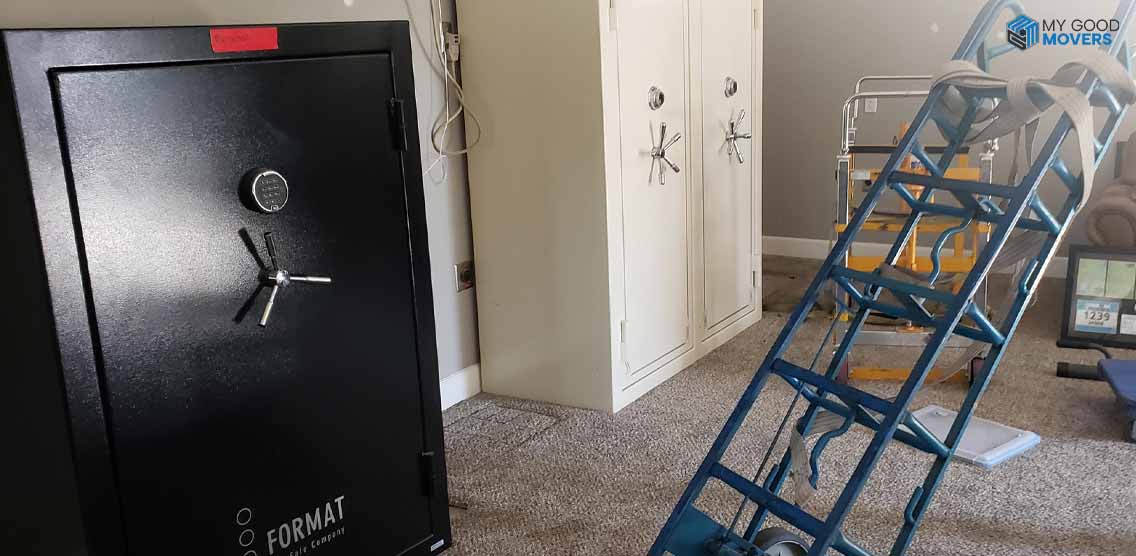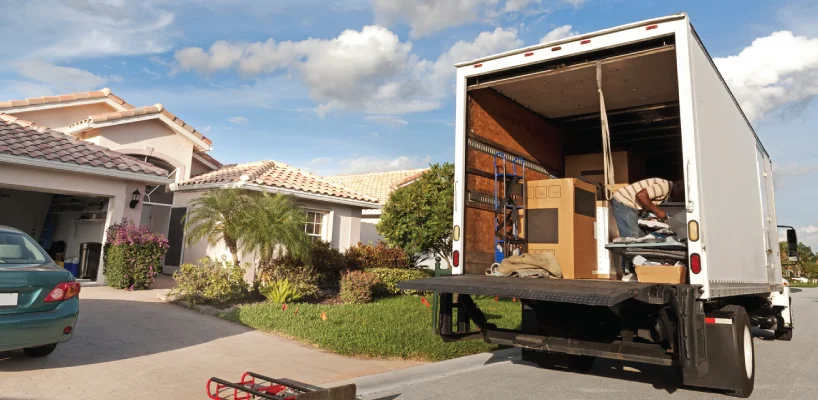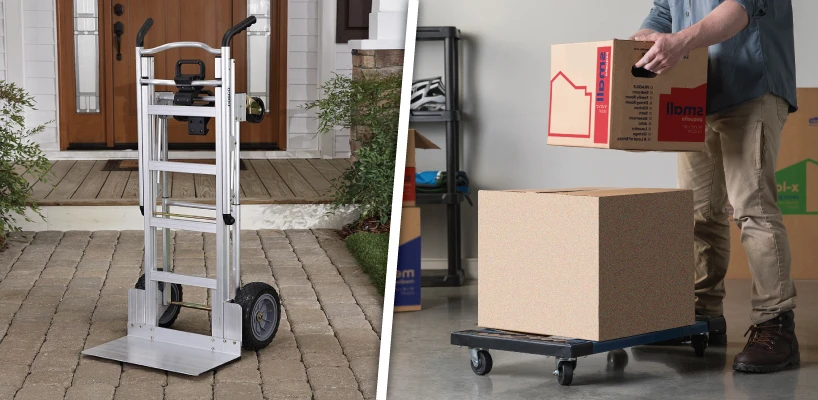You can’t take it all with you… unless you’re ready to pay for it by the pound.
You’re moving, and suddenly everything in your house feels like it weighs a ton. That old couch you swore you’d replace? Now it’s a financial liability. Your collection of vintage bowling balls? Yeah, those are gonna cost you.
This is the world of moving cost by weight, where every pound counts.
In the U.S., most long-distance movers calculate your cost based on how heavy your stuff is. According to recent statistics, the average cost per pound for movers ranges from $0.70 to $1.00.
So if you’re moving 5,000 pounds of household items, you’re looking at a bill somewhere between $3,500 and $5,000.
However, don't worry; let's break down how movers calculate costs by weight and why it's the go-to method for pricing. Keep reading to understand how moving weight affects the price, and how you can reduce it.
Why Weight Matters in Long-Distance Moves
When you're moving across states— or from one end of the country to the other — weight isn’t just a detail. It's the core factor that drives how much you’ll pay.
Movers aren't trying to make things complicated; they need a practical way to measure the size and demand of your shipment. And weight does that job perfectly.
Here’s why it really matters:
- Fuel and space: Heavier loads burn more fuel and take up more room in the truck. That means higher costs for the moving company, which adds to your quote.
- Labor and logistics: A 2,000-pound move is way easier to handle than a 12,000-pound one. More weight means more crew time, more handling, and more effort.
- Safety and compliance: Trucks have legal weight limits they can’t exceed. That means your shipment has to be carefully weighed and balanced for safe travel.
For long-distance moves, especially in the U.S., most professional movers prefer weight-based pricing because it’s straightforward, measurable, and fair. Whether you're moving out of a studio apartment or a four-bedroom house, the total pounds of your shipment gives movers a clear picture of what your relocation will cost.
Here’s the basic formula movers use:
Total Cost = (Weight of Shipment in Pounds × Rate per Pound) + Distance Charges + Additional Services
So, if you're moving 5,000 pounds of household goods from Texas to New York, and the rate is $0.85 per pound, you're looking at $4,250, before any additional fees.
How Movers Calculate Costs Based on Weight
So, how do movers actually determine what you owe when you're paying based on weight? They follow a step-by-step process designed to keep things fair, trackable, and within legal limits.
Here’s how it typically works:
Estimate the Weight (Initial Quote)
Before your move, the company may provide a weight-based moving estimate based on a visual inspection, virtual survey, or an inventory checklist.
They'll use industry averages to guess how much your belongings weigh, like:
- Standard sofa = ~300–500 lbs
- Queen bed = ~150 lbs
- Medium box = ~35–50 lbs
It’s not exact, but it gives you an estimate to start with.
Scale Weigh-In (Actual Weight)
Here’s the part that counts:
-
First, the moving truck is weighed empty (called the tare weight).
- Then, after all your belongings are loaded, they are weighed again.
- The difference is your shipment's total weight.
Rate Per Pound × Weight
The mover applies their pricing rate to the weight of your shipment. Most long-distance movers in the U.S. charge between $0.70 and $1.00 per pound, depending on distance, fuel rates, and services.
Example:
If your total shipment is 4,000 lbs and the rate is $0.85/lb:
$0.85 × 4,000 = $3,400
That's your base charge; extras like packing, insurance, or stairs may be added on top.
Final Invoice or Binding Estimate
If you agreed to a binding estimate weight move, you'll pay exactly what's quoted — even if the actual weight shifts slightly. If not, your final cost will adjust based on the certified weight, which may increase or decrease.
Common Household Items and Their Average Weights
| Item | Average Weight (lbs) |
|---|---|
| King-size bed | 200 |
| Dining table + 6 chairs | 350 |
| Washer & Dryer | 300 |
| Sectional Sofa | 500 |
| Bookshelf (full) | 150 |
| Refrigerator | 300 |
| Dresser | 150 |
| Boxes (medium, packed) | 30–50 |
These numbers help movers generate a cost estimate based on shipment weight, especially during virtual surveys.

Moving electronics? Read our guide on how to pack electronics for moving and keep your tech safe without adding extra pounds to your quote.
What’s the Average Movers Cost Per Pound?
According to recent data, professional movers typically charge $0.70 to $1.00 per pound for long-distance moves.
That means:
- 3,000 lbs = $2,100–$3,000
- 5,000 lbs = $3,500–$5,000
- 10,000 lbs = $7,000–$10,000
You can use a moving cost per pound calculator to get an estimate figure, but always confirm with a licensed mover.
Examples: Weight vs. Cost Breakdown
Let’s take this from “abstract info” to “real-life picture.” Whether you’re moving out of a 1-bedroom or packing up a whole 3-bedroom house, here’s how moving cost by weight plays out.
Moving a 1-Bedroom Apartment
A typical 1-bedroom apartment includes essentials — bed, couch, dresser, dining set, and a few dozen boxes.
- Estimated Weight: 2,000 to 3,000 lbs
- Rate per Pound: $0.80 (national average)
- Estimated Cost:
- Low End: 2,000 lbs × $0.80 = $1,600
- High End: 3,000 lbs × $0.80 = $2,400
This estimated cost includes standard transportation but does not include additional services such as packing or insurance. It shows how moving weight affects price in everyday moves; even small apartments can add up!
Moving a 3-Bedroom House
Now we’re talking beds, dressers, multiple sofas, bookshelves, kitchen gear, garage tools — the works.
- Estimated Weight: 7,000 to 10,000 lbs
- Rate per Pound: $0.85
- Estimated Cost:
- Low End: 7,000 lbs × $0.85 = $5,950
- High End: 10,000 lbs × $0.85 = $8,500
This one showcases why cost estimate based on shipment weight is essential for big moves. More stuff, more weight, and a much bigger bill.
Weight-Based Cost Breakdown
| Home Size | Estimated Weight | Avg Rate/lb | Estimated Cost Range |
|---|---|---|---|
| Studio | 1,500–2,000 lbs | $0.75 | $1,125–$1,500 |
| 1-Bedroom Apartment | 2,000–3,000 lbs | $0.80 | $1,600–$2,400 |
| 2-Bedroom Home | 4,000–6,000 lbs | $0.85 | $3,400–$5,100 |
| 3-Bedroom Home | 7,000–10,000 lbs | $0.85 | $5,950–$8,500 |
| 4-Bedroom Home | 10,000–15,000 lbs | $0.90 | $9,000–$13,500 |

Last-minute move and no clue where to start? Our top moving tips have your back — even if you're packing with one hand and labelling with the other.
Weight vs Volume Moving Cost - What’s the Difference?
When you're comparing moving quotes, one of the most confusing things people come across is this: Are they charging by weight or volume?
It's not just a pricing method; it completely changes how your move is calculated.
Let’s simplify it:
Weight-Based Pricing (What Most U.S. Long-Distance Movers Use)
This is the standard for long-distance moves across the U.S. Your shipment gets weighed on a certified scale, and your cost is calculated using a per-pound rate.
It’s transparent, fairly regulated, and easy to verify.
- Pricing: Based on the actual pounds of your household items
- Accuracy: Very precise — uses certified scale readings
-
Best for: Cross-country, interstate, or large household moves
- Example: 6,000 lbs × $0.80/lb = $4,800
Volume-Based Pricing (Used by Some Local & Container Movers)
This method calculates the cost based on cubic feet (ft³), not pounds. So instead of weighing your items, movers estimate how much space they’ll occupy in a truck or container.
- Pricing: Based on how much room your stuff takes up
- Accuracy: Depends on how carefully items are packed
-
Best for: Short-distance, international container moves
- Risk: If items aren’t tightly packed, volume costs can spike
Quick Comparison Table
| Pricing Method | Charged By | Typical Use | Pros | Cons |
|---|---|---|---|---|
| Weight-Based | Pounds (lbs) | Long-distance moves (USA) | Accurate & regulated | Heavier loads give higher cost |
| Volume-Based | Cubic feet (ft³) | Local or container moves | Can be cheaper for light items | Packing inefficiency increases cost |

Still confused about weight vs. volume? Compare the Best Long Distance Movers and learn how to spot the difference before signing anything.
How to Reduce Your Moving Cost by Weight
If you want to lower your moving costs, focus on reducing the weight of your shipment. This is one of the most effective ways to save money on long-distance moves.
Here are a few simple and practical steps you can take:
Get Rid of Unnecessary Items
Look around your home and remove anything you no longer use or need. If you have furniture that is too bulky or outdated, consider selling or donating it. Reducing the weight of your shipment can directly lower your quote.
Pack Your Belongings Wisely
When packing, avoid overfilling boxes with heavy items, such as books or tools. Use lightweight packing materials such as towels, bubble wrap, or soft clothing to cushion items. This helps keep your overall weight down and can save you money.
Disassemble Large Furniture
Take apart heavy and bulky furniture before the move. Items like bed frames, dining tables, or shelving units can be disassembled to make them easier to handle and lighter to transport.
Ask for a Binding Weight-Based Estimate
If your moving company offers it, request a binding estimate. This means the price is set based on your initial quote, and it won’t increase even if the actual weight ends up slightly higher.
Use a Moving Cost Calculator
You can use a moving cost per pound calculator to estimate the cost of your shipment based on its weight. This helps you plan ahead and avoid unexpected charges.

Packing heavy? Might be costing you more than you think. Check out the best packing hacks for moving and learn how smart packing can lighten your load.
How Different Moving Companies Handle Weight-Based Pricing
Each moving company has its own way of handling weight-based pricing. Let’s take a look at how different movers approach it:
National Long-Distance Movers
These large companies use certified scales and follow federal guidelines. They often offer binding estimate options to lock in your cost upfront.
Regional Movers
Mid-sized companies may estimate weight based on your inventory or a virtual tour. Final cost depends on the actual weight after the move.
Local Movers
Local movers usually charge by the hour, not by weight. For long-distance jobs, they may switch to weight-based pricing but often keep it flexible.
International Movers
These companies often use volume pricing, but some offer weight-based options, especially for air freight. Always check how they calculate cost before booking.
Quick Comparison Table
| Type of Mover | Pricing Method | Estimate Type | Transparency Level |
|---|---|---|---|
| National Long-Distance | Weight-based | Binding or non-binding | High |
| Regional Movers | Weight-based or mixed | Usually non-binding | Moderate |
| Local Movers | Hourly (mostly) | Flat or hourly | Low (for weight) |
| International Movers | Volume-based (mostly) | Cubic feet estimates | Varies |

New home, new checklist, same old stress? Make your move smoother with our New Home Essentials Checklist.













































































































































 (239) 799–6077
(239) 799–6077